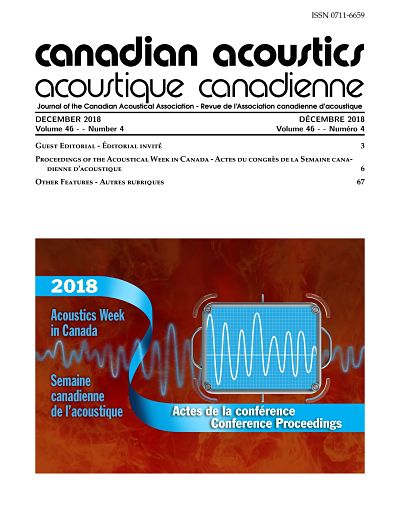Effects Of Noise Exposure On Hearing Health Evaluated Through Short Interval Otoacoustic Emission Monitoring
Keywords:
otoacoustic emissions, noise, hearing protectionAbstract
Industrial workers are often exposed on a daily basis to noise doses that put them at risk of Noise-Induced Hearing Loss (NIHL), which remains the largest cause of indemnity in North America industries. To improve occupational hearing loss prevention programs, a method to continuously measure hearing fatigue using otoacoustic emissions (OAE) has already been proposed by the authors using a portable and robust OAE system designed for noisy industrial use. The effectiveness in the field of the aforementioned method is examined by comparing a control group of unexposed subjects in laboratory and noise exposed subjects in the field. All participants are equipped with an hearing protection earpiece which includes the usual OAE measurement components as well as a microphone mounted on the outer faceplate of the earpiece. At regular intervals over the course of the day, the growth function of distortion product OAEs is measured for both groups while simultaneously measuring noise levels inside and outside the ear. Preliminary results of this study are presented and analysed in the broader context of the dose-response relationship that could indicate individuals' risk to develop NIHL.Additional Files
Published
How to Cite
Issue
Section
License
Author Licensing Addendum
This Licensing Addendum ("Addendum") is entered into between the undersigned Author(s) and Canadian Acoustics journal published by the Canadian Acoustical Association (hereinafter referred to as the "Publisher"). The Author(s) and the Publisher agree as follows:
-
Retained Rights: The Author(s) retain(s) the following rights:
- The right to reproduce, distribute, and publicly display the Work on the Author's personal website or the website of the Author's institution.
- The right to use the Work in the Author's teaching activities and presentations.
- The right to include the Work in a compilation for the Author's personal use, not for sale.
-
Grant of License: The Author(s) grant(s) to the Publisher a worldwide exclusive license to publish, reproduce, distribute, and display the Work in Canadian Acoustics and any other formats and media deemed appropriate by the Publisher.
-
Attribution: The Publisher agrees to include proper attribution to the Author(s) in all publications and reproductions of the Work.
-
No Conflict: This Addendum is intended to be in harmony with, and not in conflict with, the terms and conditions of the original agreement entered into between the Author(s) and the Publisher.
-
Copyright Clause: Copyright on articles is held by the Author(s). The corresponding Author has the right to grant on behalf of all Authors and does grant on behalf of all Authors, a worldwide exclusive license to the Publisher and its licensees in perpetuity, in all forms, formats, and media (whether known now or created in the future), including but not limited to the rights to publish, reproduce, distribute, display, store, translate, create adaptations, reprints, include within collections, and create summaries, extracts, and/or abstracts of the Contribution.


